Meet the ICCM Board Members
2017 - 2020
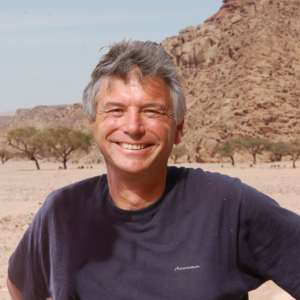
Roberto Nardi
PresidentRoberto Nardi received a degree in archaeology from the University of Rome and in conservation of archaeological materials at the Central Restoration Institute, Rome. In 1982 he founded the Centro di Conservazione Archeologica (CCA), a private company carrying out public commissions in the field of conservation of ancient monuments and archaeological sites. CCA is based in a convent located north of Rome where training course are held. He has directed more than 50 projects or training courses in 14 countries, including the Arch of Septimius Severus and the Temple of Vespasian in the Roman Forum, the ancient Roman town of Zeugma, Turkey, wall paintings at the Madrasa Amiriya in Yemen, and the mosaic at Saint Catherine’s in the Sinai. Since the mid-1980s, he has made a special effort to raise awareness on the themes of fragility and safeguard of cultural heritage by opening CCA’s conservation worksites to the public in places such as the Capitoline Museum in Rome and Masada in Israel. He has developed projects for the Getty Conservation Institute and the Packard Humanities Institute, with special reference to mosaics conservation. He has published 80 technical articles and was the Kress Lecturer at the American Institute of Archaeology for 2010/2011. He has been a member of ICCM since 1983, its Vice-President since 1989 and the President since 2014.
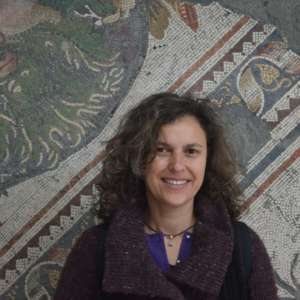
Stefania Chlouveraki
Vice-PresidentStefania Chlouveraki received a BSc in Archaeological Conservation from the T.E.I. of Athens and her PhD from the Institute of Archaeology, University College London. She has been teaching mosaic conservation at the Department of Antiquities and Works of Art Conservation, University of West Attica, (former T.E.I. of Athens), since 2006. From 1997 until 2014 she was the Head Conservator of the W.D.E Coulson Conservation Lab at the INSTAP Study Centre for East Crete and directed several object and site conservation programs. Since 1993 she has been organising and directing the mosaic and building conservation/training projects of the European Center for Byzantine and Post Byzantine Monuments in Jordan and Syria. in 2014-2015 she coordinated the INSTAP-KAPLAN program on the development of 'Conservation Master Plans for Sites with Rubble/Earthen Architecture in Greece', including field applications and training seminars. Her professional and research interests include the documentation, remedial and preventive conservation of architectural remains, focusing mainly on in-situ mosaics and rubble/earth architecture, the recovery of mosaics from past conservation treatments, and the development of light-weight systems for mounting detached mosaics She is a Founding Member of the Hellenic Society for Near Eastern Studies (HSNES), and has been a member of the Directory Board of ICCM since 2008 and its Vice President since 2014.
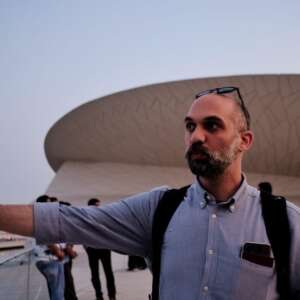
Theocharis Katrakazis
TreasurerTheocharis Katrakazis is a conservator with experience in the conservation of archaeological and built heritage. He has an MSc in Conservation Studies from University College London (UCL) and a BA in Archaeological Conservation from the T.E.I of Athens (currently, University of West Attica). He works as a project-based specialist delivering conservation fieldwork and cultural heritage consultancy services since 2019. Previously, he was employed at ICCROM to support research activities within the Heritage Science program and at ICCROM-Sharjah (Regional Conservation Centre in the UAE) to help with capacity building program development in the MENA region. He has also worked as a teaching assistant for the MSc in Conservation Studies at UCL Qatar and the BA in Conservation of Cultural Heritage Objects at Gothenburg University. He has been involved in the planning and implementation of heritage conservation projects in Southern Europe, Middle East and North Africa region, and Central Asia. His professional and research interests include preventive conservation and applied management practices, traditional knowledge systems in built heritage, and the ways in which heritage practices contribute to stronger societies. Theocharis has been a member of the Directory Board of ICCM since 2017, supporting the ICCM Foundation as Treasurer.
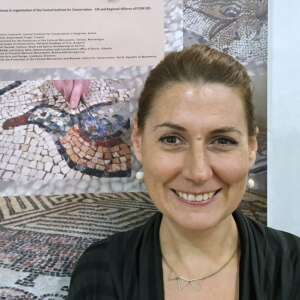
Maja Franković
SecretaryMaja Franković holds MA in conservation-restoration from the University of Arts in Belgrade and PhD in Geo-sciences from the Faculty of Mining and Geology, University of Belgrade. She has been trained in mosaic conservation through internships at the Musée départemental de l'Arles antique (2002 and 2004) and the training course given in Belgrade in 2008 by the Instituto Superiore per la Conservazione ed il Restauro. She has participated in ICCROM's Regional courses on archaeological conservation for Southeast Europe (2004-2007) and International Course on Stone Conservation in 2013. From 2005, she was employed at the National Museum Serbia where she led a team restoring the museum’s mosaic collection. From 2009 to 2021 she worked at the Central Institute for Conservation in Belgrade as senior conservator. She was head of the Center for conservation-restoration and a board member of the Central Institute for Conservation from 2015 to 2021. From 2021, she is back at the National Museum Serbia as the conservator counselor. Her competences include development and implementation of projects in mosaics and stone conservation, comprising preventive and curative conservation, cross-disciplinary research, education and capacity building. She was the responsible conservator and project manager in more than 25 conservation projects, including conservation of mosaics and stone artifacts from WHS Gamzigrad-Felix Romuliana, mosaics from Villa urbana in Budva, Montenegro and Skelani in Republic of Srpska, Bosnia and Herzegovina. She has published 35 papers with results of her work. She is co-founder of the SEE Mosaics project – a platform for collecting data on mosaics in Southeast Europe and networking of professionals involved in mosaic conservation. She has been a member of ICCM since 2002.
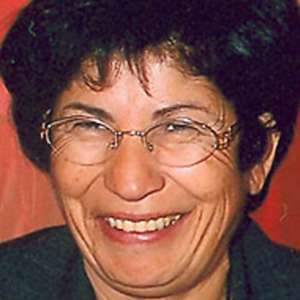
Aïcha Ben Abed
MemberAicha Ben Abed received her doctorate from the University of Aix-en-Provence and a post-doctoral degree (HDR, authorizing the holder to direct the research of others) from Paris IV-Sorbonne. She has been Director of Sites and Monuments at the Tunisian INP and organized many roundtables on Archeology in Tunisia. She was also Director of the Bardo Museum and curated several international exhibitions. She worked closely with ICOM for the establishment of AFRICOM, the organization of the first meeting of ICOM-ARAB in Hammamet and a workshop on illicit traffic in the Arab Region. She was responsible for four ancient sites, co-directed three French-Tunisian excavations, and was the director of the Tunisian-French project for the Conservation and Valorization of the site of Dougga. She worked closely with many experts in the field of sites conservation to establish a Strategy of conservation and preservation for Tunisian sites. Co-Director of the Tunisian Corpus, Aicha is the author and co-author of six volumes on the Corpus of Tunisian Mosaics and of several books and articles on domestic architecture and Tunisian mosaics. She co-directed with S. Verger from the Ecole Française de Rome a few sessions of "Ecole Doctorale". She directed and co-directed Doctorate theses on Roman archaeology, and gave lectures on Tunisian Heritage all over the world. She initiated the collaboration between the Institut du Patrimoine Tunisien and the Getty Conservation Institute for the training of technicians in the field of in-situ mosaic conservation. The project included 5 workshops on site management for Tunisian site directors. She participated and coordinated 2 Euromed heritage programs and organized the IX ICCM Conference in Hammamet with the help of the GCI. Aicha Ben Abed is now the coordinator of the MOSAIKON Program
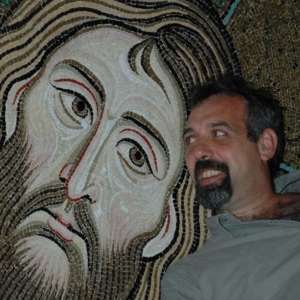
Alessandro Lugari
MemberAlessandro Lugari received a degree in Technologies for conservation of cultural heritage at University of Tuscia in Viterbo and in Conservation of mosaics at ‘School of conservation of Mosaics’ in Ravenna. He has 30 years of experience on the conservation of mosaics and sectilia. In 2001 he begun to work as a conservator at the Opificio delle Pitre Dure di Firenze. In the last 13 years he works at the Soprintendenza Speciale per il Colosseo, il Museo Nazionale Romano e l’Area Archeologica di Roma, where he directs several conservation projects on mosaics, stones and sectilia. He is a founding partner of AISCOM (Italian association of study and conservation of ancient mosaics) in which is a member of the board. Over the last six years he organizes an international prize of contemporary mosaic, in Nazzano, a little village at north of Rome. He has been studying the construction methodology of ancient mosaics and has published several papers on ancient mosaic technology. He teaches conservation of stone and mosaics at the Central Restoration Institute in Rome.

Montserrat Pugès i Dorca
MemberMontserrat graduated from Universitat de Barcelona in Fine Arts and also Archaeological materials Conservation. She has taught conservation of archaeological materials in two archaeological work schools: Tarragona (1986 - 1989) and Barcelona (1989 - 1993). Since 1993 she is in charge of the Area d’intervencions en el Patrimoni within the Archaeological Service of Barcelona’s Council where she manages and coordinates the different working teams. Conserving the archaeological heritage of a city such as Barcelona is a really interesting and wonderful task that requires method, criteria, rigor and the capacity of team-working. From the project redaction to the coordination of work-teams, she has taken part in the restoration of a great diversity of archaeological and historical materials – stone, glass, metals, ceramics, mortars, mural paintings or organic materials- which, at the same time, belong to a really variated spectrum of time; from Neolithic sites or the roman walls of Barcelona to Spain’s Civil War graffiti or the Sagrada Familia.
She is a founding member of Saxum –Diagnosi i tractament de la pedra (1992-1999) and also a coordinator of the Master’s degree in restoration of historical buildings. She is also a founding member of Gràpac - CetecPatrimoni (since 1999), interdisciplinary research groups in heritage materials associated with two universities (UAB and URL-IQS). She has collaborated with many workshops, roundtables, and courses regarding issues on conservation materials. From her perspective, teaching is a very necessary task and complementary to her regular work, as a way to contribute to the formation of the new professionals, benefiting the heritage conservation as a consequence.
She has participated in several international conferences and published papers in a great number of scientific journals about the works she develops: practical works in heritage conservation or administration and management of urban-type heritage. Her research activity has been orientated towards the terminology of about diffusion of restoration works or to give to know her task about the management and administration of heritage in urban environments. She also has collaborated in research for applied conservation terminology in aim of the maintenance and improvement of the minority languages. M Pugès is sure that it must work from transdisciplinarity to develop a model of management of the conservation preventive of urban; nowadays she concentrates her efforts in that direction.
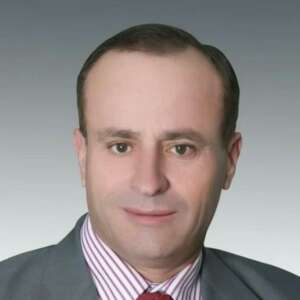
Ahamd Al Mairah
MemberDr. Ahamd Al Mairah, an Associate Professor in Archaeology, is currently serving as the Dean of the Madaba Institute for Mosaic Art & Restoration. With expertise in the field of mosaics and antiquities, Dr. Ahamd Al Mairah also serves as a judge and academic supervisor for archaeology curricula in various Jordanian universities.

Nikifor Haralampiev
MemberNikifor Haralampiev received a degree in wall painting conservation from the National Academy of Art, Sofia in 2006. He was an intern at the Conservation Lab of the Ivan Duichev Center for Slavo Byzantine Studies (2006-08) and at the Science Department of the Getty Conservation Institute (2010-11). In 2013 completed his PhD in technical art history at Sofia University “St. Climent Ohridski”. Since 2014 Nikifor has been teaching Architectural Surfaces Conservation and Conservation Documentation at the National Academy of Art, Sofia. He led the research and conservation of the 20th century murals in the vault of the St. Demetrius church in Sofia, and the revealing of the 16th c. wall paintings in the altar of the church in the Kurilo Monastery, Bulgaria. Since 2020 he has been working on the conservation of the mosaics in the Buzludzha Monument as part of the Buzludzha Project Foundation’s Mosaics Conservation Team.
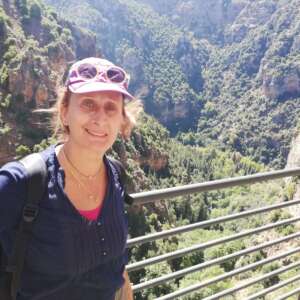
Samar Karam
MemberSamar Karam is the Head of Archaeological and Historical Sites in North Lebanon at the Directorate General of Antiquities-Ministry of Culture. She holds a BA and an MA in Art and Archaeology from the Lebanese University. Samar began her career as an archaeologist in Beirut, participating in urban excavations after the civil war. In 1996, she joined the Directorate General of Antiquities-Ministry of Culture and was appointed as an archaeologist in charge of the world heritage site of Byblos. She managed the archaeological site, controlled projects in the historical city, coordinated UNESCO delegations, reorganized abandoned archaeological storages since 1975, and contributed to the creation of the site museum of Byblos in 2001. In 2000, she was promoted to be in charge of North Lebanon's bigger area, which includes several archaeological sites and historical cities. She participated in the rehabilitation and presentation of different sites, including Tripoli castle, its two museums, Hammam Ezzedine in Tripoli, Monuments in the World Heritage Site of the Holy Valley (Qadisha Valley), and the revival of the historical city of Al Mina. Samar is the focal point for the world heritage sites of Lebanon, updated the tentative list of Lebanon, and has a key role in periodic reporting for the 5 Lebanese sites on the World Heritage list, specifically the Holy Valley and the Cedars Forest. Since 2010, she has been trained within the Mosaikon program, where she gained knowledge in conservation and restoration methods and approaches, as well as the management of archaeological sites with mosaics. Currently, she is a member of the Mosaic Management Unit in Lebanon and the co-coordinator of the Mosaic Conservation Course in Lebanon. She is a member of the committee for the management of the National Museum of Beirut and ICOM Lebanon.

Yasmina Ameziane
MemberYasmina Ameziane is an archaeologist and researcher with a doctorate in archaeology from the University of Algiers in 2021, specializing in man and environment-archaeological and archeometric approach. She has been a Heritage Curator at the Public National Museum of Antiquities in Algiers-Algeria since 2013, and previously worked there as a researcher from 2011. She has been responsible for managing several collections of artifacts, including ceramics, coins, and mosaics, and has published articles in the museum's reviews, as well as participated in organizing several exhibitions. She has participated in a mosaic restoration project in the archaeological site of Tipaza and has contributed to several national conferences on various themes such as illicit trafficking of protected cultural property, heritage, and identity. She has trained and sensitized teams of customs officers and police officers in the context of heritage protection against illegal trafficking of cultural property. Yasmina is also a vacation course teacher in the field of archaeology at the University of Algiers. She has participated in several training courses within the framework of MOSAIKON, such as the Arles-blue museum in 2016-2017, MOSAIKON school site in Tipaza, Algeria in 2018, and Italy's CCA center for conservation in archaeology from September to December 2018. Yasmina has also been part of the restoration project of the mosaics of the Public National Museum of Antiquities in Algiers, which was carried out as part of a cooperation project between the Ministry of Culture and the American Embassy in Algeria, with the restorer Roberto Nardi of CCA. Currently, Yasmina Ameziane works as a restorer in the restoration laboratory - antique mosaics in Tipaza, Algeria, which was established in 2018.
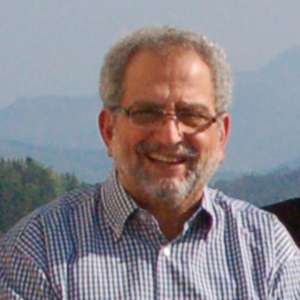
Demetrios Michaelides
President Emeritus/ Ex Officio MemberDemetrios Michaelides (President Emeritus) is Professor of Classical Archaeology at the University of Cyprus. He completed his undergraduate studies at the Courtauld Institute, University of London (B.A. in History of European Art) and his graduate studies at the Institute of Archaeology, University of London (M.A. in Archaeology of the Roman Provinces; Ph.D. “The Pavements of Roman Benghazi, Libya”). He has taught at the Università per gli Stranieri of Perugia in Italy and worked under various guises at the British School at Rome (Assistant Director, Cultural Adviser, and Assistant Librarian). In 1982 he returned to Cyprus and worked at the Department of Antiquities as Archaeological Officer for the District of Paphos. He was appointed Associate Professor at the University of Cyprus in 1992 and Professor in 2000. He was the first Head of the Department of History and Archaeology (1996-2000), and he is presently Director of the Archaeological Research Unit of the University. He has published widely on Cypriot and Mediterranean Archaeology, and is on the Scientific Board of several archaeological periodicals and encyclopedias. He was instrumental in organizing several workshops (in collaboration with the Getty Conservation Institute) dealing, mainly, with the conservation of mosaics. During 1994-2004, he was Vice-President of AIEMA (Association Internationale pour l'Etude de la Mosaïque Antique) and is presently a member of the Administrative Council. He has been a member of the Board of ICCM since 1990 and its president since 1996.
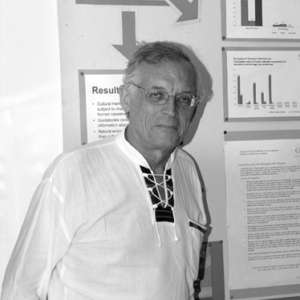
Gaël de Guichen
Honorary President/ Ex Officio MemberGaël de Guichen is a french chemical engineer. He used to be in charge of the conservation of the prehistoric Cave of Lascaux in France. Later, in 1969, he joined ICCROM . In 1977, he organized the first conference on Mosaic Conservation, which gave birth to the ICCM. For 9 years he was its Secretary. In 1999, he was nominated Honorary President. He stayed for his entire career at ICCROM actively developing programmes on Preventive Conservation for the 135 member countries and since 2007 proposing the wordwide program for reorganizing the storages in museums (RE-org) He is now advisor of the Director general of ICCROM.

Anne-Marie Guimier-Sorbets
Honorary/ Ex Officio Member - AIEMA RepresentativeAnne-Marie Guimier-Sorbets (AIEMA Representative) est professeur émérite d’archéologie et d’histoire de l’art du monde grec à l’Université de Paris Nanterre. Elle fait partie de l’équipe Archéologie du monde grec et systèmes d’Information au sein de l’Unité Mixte de Recherche « Archéologies et Sciences de l’Antiquité » (Centre National de la Recherche Scientifique, Université de Paris I, Université de Paris X, Ministère de la Culture), dans la Maison René Ginouvès, sur le campus de Nanterre. Elle consacre ses recherches à l’architecture et au décor architectural (mosaïque, peinture, stuc) dans le monde grec jusqu’à l’époque impériale. Elle travaille notamment sur la Grèce du Nord et sur l’Egypte gréco-romaine. Pour la mosaïque, ses publications et travaux en cours concernent principalement les techniques et l’iconographie des pavements à l’époque hellénistique et le début de l’époque impériale ; elle est chargée de la publication des mosaïques et des peintures d’Alexandrie découvertes par le Centre d’Etudes Alexandrines (directeur J.-Y. Empereur) et collabore avec le Service des Antiquités de l’Egypte et le Musée gréco-romain d’Alexandrie. Présidente de l’Association Internationale d’Etude de la Mosaïque antique (AIEMA), elle représente cette association au sein du bureau de l’ICCM.
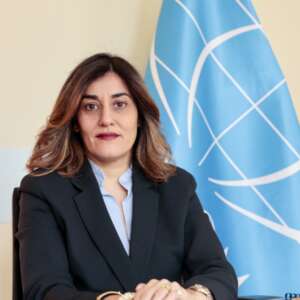
Aruna Francesca Maria Gujral
Director-General of ICCROMMs Gujral is an accomplished, dynamic, innovative and committed thought leader with more than 20 years of experience in the public and international development sectors whose extensive background and vast experience in complex programme development and management, strategic planning and programming, governance and policy, coupled with remarkable expertise in mobilizing funds and forging multi-stakeholder partnerships, position her as a guiding force for the Organization. She is, an Italo-Indian with an outstanding multicultural and multilingual background, previously worked for over 18 years at the Food and Agriculture Organization of the United Nations (FAO), where she held several leading roles in multiple countries and regions, and served in several duty stations at the country, sub-regional, regional, and HQ levels. In her previous role as Adviser on Strategy and Policy Coherence at the UN Food Systems Coordination Hub in FAO HQ, Ms Gujral provided strategic advice to enhance policy integration and acceleration of the Sustainable Development Goals (SDGs) and the 2030 Agenda. As Special Adviser to the Deputy Director-General at FAO, she played a key role in transforming the Organization's business model, propelling policy and operational changes, establishing a programmatic approach for greater impact, fostering key partnerships and strategically positioning FAO within the UN Development System Reform. In addition, Ms. Gujral's varied career at FAO includes roles such as Strategy and Planning Officer at FAO HQ in Rome, Italy, Programme Development and Resource Mobilization Officer in Cairo, Egypt for the entire NENA Region, Head of the Policy, Planning and Programming Unit in Mogadishu, Somalia and Programme Coordination Officer in Accra, Ghana for the entire Africa Region. This history showcases her ability to successfully align national strategies with effective programmes and nurture decisive partnerships with various stakeholders, including, Governments, Donors, UN Agencies, NGOs, IFIs, and Private Sector partners. She was stationed in various countries, including Jordan, Sudan, the United Arab Emirates, Kenya, and the Central Africa Republic, which highlights a remarkable ability not only in conceiving cross-sectorial policies and programmes, mainstreaming results-based strategic planning and providing technical assistance on the ground, but also in leading and managing complex programmes and operations, mobilizing significant resources and effectively contributing to policy cohesion and accelerating sustainable transformations through programmatic and systemic-thinking methods. Ms Gujral's earlier career includes roles such as Policy Advisor and Project Analyst for the Society for International Development (SID), Multilateral Cooperation Specialist for the Italian Ministry of Foreign Affairs and International Cooperation, Project Manager and Microcredit Specialist for the Friuli Venezia Giulia Region, Assistant Professor in International Cooperation at the University of Trieste, Italy and Institutional Relations Specialist and Exhibitions Curator at the Italian Institute of Culture in Paris, France. Ms Gujral is truly passionate about and fully committed to accelerating progress through participatory and systems-thinking approaches and propelling well-being, social cohesion, inclusivity, and economic growth for better lives and livelihoods, particularly for youth and women.
